Muslim. British born Barbadian. Gujarati. 📖 Islamic history enthusiast & Researcher ✍ Blogger & Freelance Writer 🎤 Aspiring nasheed artist 📍 Birmingham, UK
Don't wanna be here? Send us removal request.
Text
As salamu alaykum.
Upon completion of his UK Speaking Tour, my good friend & teacher Ustadh Abu Ayyub - as a huge thank you to all the amazing communities and individuals he met - is offering everyone 40% off his upcoming courses.
You can find out more by visiting his website below:
In the Shade of the Minaret

0 notes
Text
Eid Mubarak!
Bayramımız Mübarek olsun!
تَقَبَّلَ اللّهُ مِنَّ وَ مِنْكُمْ
Taqabbalallahu minna wa minkum
May Allah accept it from us and from you.
Let us all remember the Ummah - particularly our brothers & sisters in Gazza - even in our moments of joy & happiness.

0 notes
Text
"The Luminaries".
Collaboration between myself & Sacred Footsteps
Allah accept.
Video Credit: Sacred Footsteps
0 notes
Text
The Fourth Crusade was mentioned in Diriliş Ertuğrul. This is where the Catholics (Latins) wanted to retake Jerusalem from the dynasty of Salahuddin: the Ayyubids.
They ended up sacking Constantinople (Eastern Roman Empire) and killing their fellow Orthodox Christians.
For those of you watching the Sultan Mehmed series, this video is an important backdrop to understand the tensions between the Orthodox Christians and Catholic Christians.
Disclaimer:
All rights belong to TRT.
This is for educational purposes.
#islam#muslim#history#islamic history#history blog#diriliş ertuğrul#dirilis ertugrul#ertuğrulgazi#resurrection ertugrul#ertugrul#constantinople#salah ad din yusuf ibn ayyub#ayyubid#seljuk#seljuq#catholic#orthodox christianity
2 notes
·
View notes
Text
Eid Mubarak!
Kurban Bayramımız Mübarek olsun!
تَقَبَّلَ اللّهُ مِنَّ وَ مِنْكُمْ
Taqabbalallahu minna wa minkumMay Allah accept it from us and from you.
Pictured (by Le Monde Illustre) is a depiction of Eid al Adha celebrations in Yaffa (Jaffa), Ottoman Falasteen in the year 1870 CE / 1286 AH.
Let us all remember the Ummah - particularly our brothers & sisters in Gazza - even in our moments of joy & happiness.

0 notes
Text
On this day (March 3, 1707 CE {27/28 Dhul Qa'dah, 1118 AH}), the Great Mughal Sultan Muhi-ud-Din Muhammad better known as Aurangzeb Alamgir, at the age of 88 years old, died of natural causes at his imperial war tent.
"Gradually unconsciousness crept on, his breathing became harder and harder, but such was the mastery of that indomitable spirit over his rosary and his lips to gasp out the remembrance of God, till about eight O clock when all was over. He had ever wishes to die on the blessed day of Friday, and the prayer had been granted by the gracious deity to one of his truest servants."
Photo Credit: Timurid-Mughal Archives

1 note
·
View note
Text
On this day (March 3, 1924 CE {26/27 Rajab, 1342 AH}) - exactly 100 Gregorian years - the Ottoman Caliphate was officially abolished by the newly founded Turkish Republic under Mustafa Kemal (more popularly known as Atatürk).
The last Ottoman Caliph (pictured) - Abdülmecid II - was sent into exile in France along with the rest of the family of the House of Osman.
------
Osmanli Tarihi Arşivi (Ottoman History Archive):
Let us venture back in history; the year is 1924 and it is sometime after midnight.
A single light, coming from the library is still on in Dolmabahçe palace. There, an old man sits quietly and reads the Qur'an, pondering over the state of his nation.
His name is Abdulmecid II and he is the 116th Caliph of Islam. Two years prior, his cousin Sultan Mehmed Vahdeddin VI had been exiled to Italy and the Ottoman Sultanate had been abolished by the Grand National Assembly of Turkey.
On the night of March 3rd, a young army messenger opened the door to the library. The Caliph continued to read the Qur'an and the messenger was initially taken aback by the sight, but he forced himself to read out the proclamation from the Grand National Assembly of Turkey.
The Caliph refused to leave Istanbul, but his staff were worried that they would all be killed by the army who had now surrounded the palace and had him and his family at gunpoint.
After weighing the few options he had, he reluctantly packed some of his clothes and went into exile. Before dawn prayer, the Caliph was taken to the Çatalca train station where he and his family were put on the Orient Express bound for Switzerland.
An envelope containing £2000 was given to Abdulmecid Efendi. The station master quickly ushered the Caliph and his family into his small house adjoining the train station to shelter them from the cold on the platform while they awaited the train.
As they drank tea, the Caliph thanked him for his hospitality. The station master - a Jewish man - began to cry. “How can you thank me?” he asked. Instead, he in turn thanked the Caliph for the honour of being able to serve him even if for a brief moment.
In the morning, the population awoke to the news in shock - the Caliphate had been abolished. There were isolated riots and uprisings in various places, but the army put them down.
The last Caliph spent his days walking along the promenade in Paris, France. There, he lived a quiet life until he died in 1944 CE during the Nazi occupation of France.
As no Caliph had ever been buried in non-Muslim lands, Abdulmecid II's body was eventually transported to, and buried in Jannat Al-Baqi cemetery in the blessed city of Madinah, Arabia. The major political and spiritual office of Caliph had also been buried with him as well.

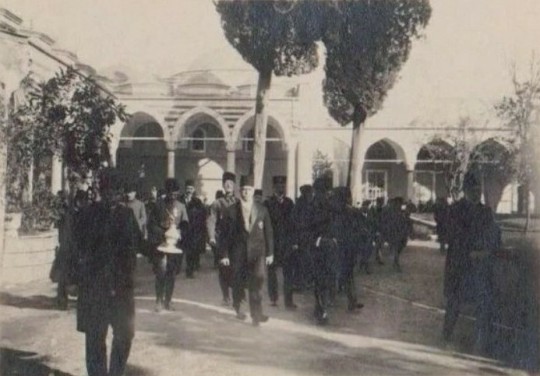
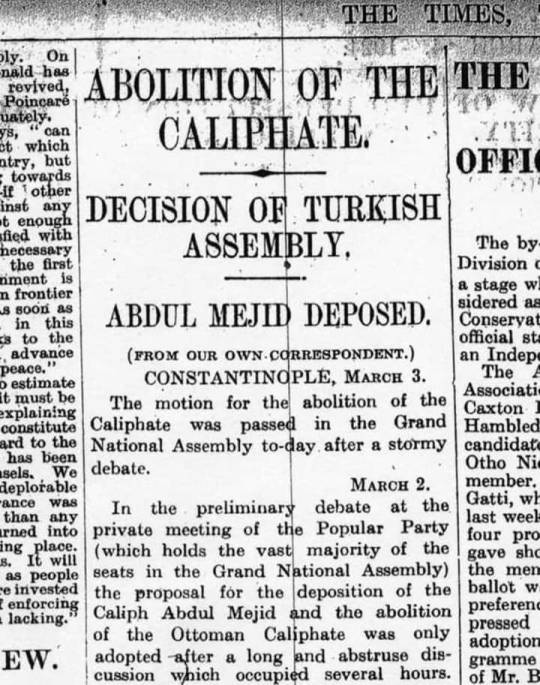
2 notes
·
View notes
Text
𝗗𝘆𝗻𝗮𝘀𝘁𝗶𝗲𝘀 𝘄𝗶𝘁𝗵 𝗺𝗮𝗺𝗹𝘂𝗸 𝗼𝗿𝗶𝗴𝗶𝗻𝘀:
- 𝗧𝘂𝗹𝘂𝗻𝗶𝗱𝘀 (𝟴𝟲𝟴–𝟵𝟬𝟱 𝗖𝗘):
The Tulunid dynasty (al-ṭūlūnīūn) was founded and named after the Abbasid Turkic general and governor of Egypt - Ahmad ibn Tulun - in the year 868 CE, who formed the first ever independent state in Egypt (as well as parts of Syria) since the Ptolemaic dynasty (around 898 years prior).
Ahmad’s father Tulun was said to be a Turk from the region known to the Arabs as Tagharghar or in Turkic, Toghuz-oghuz or Toghuzghuz; this region by medieval Arab historians is attributed to the 𝐔𝐢𝐠𝐡𝐮𝐫 𝐅𝐞𝐝𝐞𝐫𝐚𝐭𝐢𝐨𝐧 𝐨𝐫 𝐔𝐲𝐠𝐡𝐮𝐫 𝐊𝐡𝐚𝐧𝐚𝐭𝐞/𝐔𝐢𝐠𝐡𝐮𝐫 𝐊𝐡𝐚𝐧𝐚𝐭𝐞.
The Tulunids were the first state/dynasty of Turkic mamluk origins and reigned from 868 to 905 CE with nominal autonomy, until the Abbasid Caliphate brought their domains back into Abbasid control.
Pictured below is the Ahmad ibn Tulun Mosque constructed between the years 876-879 CE. The mosque was meant to serve as the main congregational mosque in the new Tulunid capital of Al Qata’i, and is the oldest mosque/masjid in Egypt and one of the oldest in all of Africa.
Its architectural style is that of Samarra (Iraq/Mesopotamia) and very closely resembles the Great Mosque of Samarra constructed by the Abbasids between the years 847-861 CE.
(Share!)
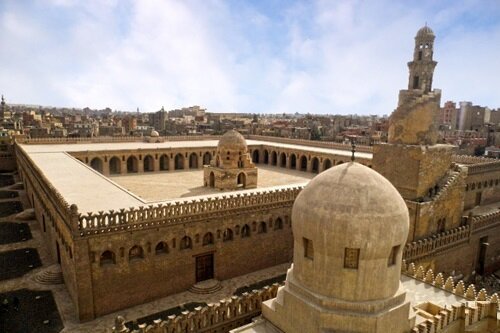
#islam#muslim#history#islamic history#history blog#mamluk#mamluks#abbasids#abbasid caliphate#ahmad ibn tulun#ahmad ibn tulun mosque#mosque#masjid
5 notes
·
View notes
Text
NEW BLOG POST!
(It's been a while...)
Dirilis Ertugrul: Part 5 - The Mamluk Sultanate of Egypt & Syria
With the rise in popularity of Dirilis Ertugrul, I attempt in this article to provide some historical information around the various mamluk dynasties throughout the ages as well the depiction of the Mamluks of Egypt & Syria in Dirilis Ertugrul.
Note: This article is quite extensive and may contain spoilers for watchers of the various Turkish historical series.

#islam#muslim#history#islamic history#history blog#mamluk#mamluks#diriliş ertuğrul#dirilis ertugrul#al quds#masjid al aqsa#mongol empire#mongol history
3 notes
·
View notes
Text
Map made by al-Mas'udi (full name: Abu al-Hasan Ali ibn al-Husayn ibn Ali al-Masʿudi) in the 900s CE showing the "unknown land" of the Americas, 500 years before Columbus.
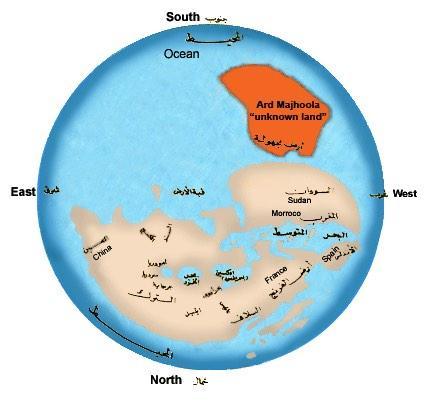

4 notes
·
View notes
Text
Pictured are Ottoman soldiers with the Ottoman standard of Gazzah, given to the 79th Infantry Regiment which defended Gazzah, Ottoman Falasteen in the First Battle of Gazzah during World War I, c. 1917 CE (1335/1336 AH)
The First Battle of Gazzah took place on March 26, 1917 CE (2/3 Jumada al-Thani, 1335 AH).
The Ottomans successfully defended the city on this occasion and again in April 1917 CE (Jumada al-Thani 1335 AH) at the Second Battle of Gazzah, but thereafter lost the Third Battle of Gazzah in November 1917 CE (Muharram 1336 AH).
By December 1917 CE (Safar 1336 AH), the Ottomans then lost Al Quds (Jerusalem) ending their 400 year old rule (1517-1917 CE) of modern-day Falasteen and their custodianship over Bayt al-Maqdis (Al Aqsa).

#islam#muslim#history#islamic history#history blog#gaza#free gaza#gaza strip#palestine#falasteen#falastin#world war 1#ottoman history#ottomans#ottoman#osmanli#masjid al aqsa#al aqsa mosque#al quds
17 notes
·
View notes
Text
❝...Over these many decades since the Partition, the conventional understanding has calcified that Hindustan is either a simple Hindi word for "India", an articulation of Hindu chauvinism, or, more rarely, something associated with the bygone era of the Mughal (Timurid) polity - itself understood by the Hindu Indian as a demonstration of the imperial violence of foreigners.
The erasure of the precolonial idea of Hindustan has meant that it is taken as a truism that there was no coherent concept of peninsular India before British domination. What is nominally understood by this is that the British were the first to control or claim the entire territory of the southern peninsula.
In this line of telling, the subcontinent before British colonisation was an age of "regional kingdoms" with no coherent notion of territoriality nor the political control over the entire peninsula.
The only noted exceptions are of Ashoka, from the third century BCE, whose realm included Kabul, or the Mughal king Aurangzeb, who extended Mughal rule in and beyond Deccan in the late seventeenth century (CE).
Such conventional wisdom, these historiographic truths, are mistaken. Certainly, the Mughals did not create the concept of Hindustan. There already existed an idea that Hindustan was a place of territorial integrity that encompassed the entire subcontinent...❞
Source: The Loss of Hindustan | The Invention of India by Manan Ahmed Asif, Pages 2-3
Pictured below is the map of Hindustan (or then British India) in 1859 CE - two years after the failed Hindustani revolt led by the last Timurid-Mughal Sultan Bahadur Shah Zafar II - by 19th century American cartologist Joseph Hutchins Colton.
.
Ammār ibn Aziz Ahmed
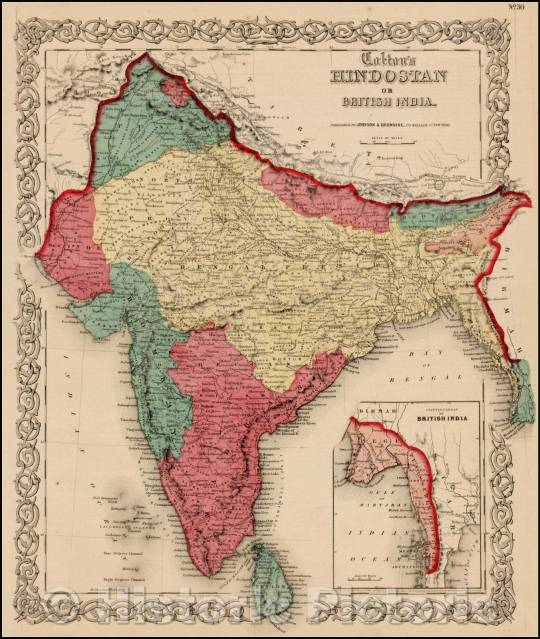
#islam#muslim#history#islamic history#history blog#books & libraries#indian subcontinent#india#bharat#hindustan#mughal#aurangzeb
3 notes
·
View notes
Text
The Prophet ﷺ said,
"Verily you shall open/conquer Constantinople (Istanbul). What a wonderful leader will her leader be, and what a wonderful army will that army be!"
(Musnad Ahmad)
#islamic knowledge#islamic history#history#history blog#hadith#prophet muhammad#ottomans#ottoman history#ottoman#sultan muhammad al fatih#fatih sultan mehmet
7 notes
·
View notes
Text
My short rendition of Taalama ashkoo gharamee.
May the peace and blessings of Allah be upon the Noble Messenger ﷺ
https://www.instagram.com/reel/Csd0EsXI3Rt/?igshid=MzRlODBiNWFlZA==

5 notes
·
View notes
Text
❝ ...In the early nineteenth century, the word Hindustan begins to fade from the colonial archive. The major histories of the subcontinent, written in the early parts of the nineteenth century, were now histories of "British India".
With the British East India Company (BEIC) ascendant, the Maratha or the Sikh polities did not invoke Hindustan in their political claims.
There was a brief last resurgence of Hindustan in 1857 CE. The rebels and revolutionaries who opposed the British East India Company (BEIC) rule rallied to the flag of the Mughal Sultan, Bahadur Shah Zafar. He was once again, hailed as the Shahanshah-i Hindustan (Emperor of Hindustan) - clearly there remained an idea of Hindustan.
After violently crushing the revolution, Queen Victoria took British India under her direct rule and assumed the title of Empress of India, sending Bahadur Shah Zafar to die in exile in Burma.
...And so, (as) per (the poet) Mirza Ghalib, Hindustan became the past. ❞
Source: The Loss of Hindustan | The Invention of India by Manan Ahmed Asif, Pages 1 to 2
Pictured is the one of the few photos of the aforementioned Bahadur Shah Zafar or Bahadur Shah II - the last Timurid-Mughal Sultan - after trial in court and prior to his exile to modern-day Burma, following the unsuccessful and brutally crushed Hindustani Revolt of 1857-1858 CE.
Photo Credit: The British Library
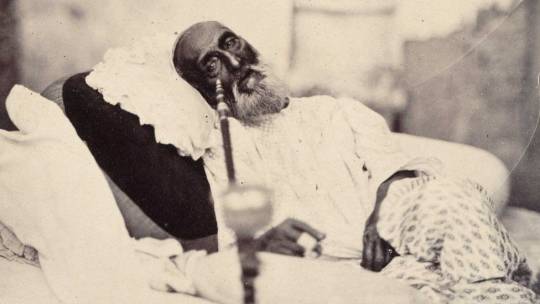
#islam#muslim#history#islamic history#history blog#hind#hindustan#indian subcontinent#india#pakistan#bangladesh#sri lanka#nepal#burma#myanmar#the british empire#the british invasion#mughal#mughal emperor#mughal empire#bahadur shah zafar
7 notes
·
View notes

